The Economics and Statistics Division maintains archives of previous publications for accountability purposes, but makes no updates to keep these documents current with the latest data revisions from Statistics Canada. As a result, information in older documents may not be accurate. Please exercise caution when referring to older documents. For the latest information and historical data, please contact the individual listed to the right.
<--- Return to Archive
For additional information relating to this article, please contact:
January 30, 2025US GDP 2024 Q4 AND ANNUAL (ADVANCED ESTIMATE) 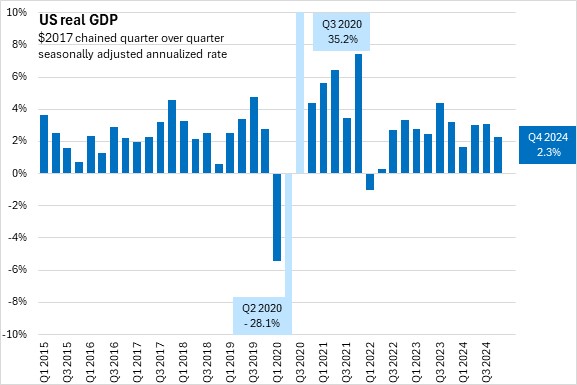
The Bureau of Economic Analysis released the advanced estimates of Q4 and annual 2024 US Real Gross Domestic Product (GDP).
US real GDP growth was estimated at 2.3% (seasonally adjusted annualized rate) in Q4 2024 in the first estimate.
The increase in real GDP was supported by increases in consumer spending (+4.2%), state and local government spending (+2.0%), federal government spending (+3.2%), residential investment (+5.3%) and fewer imports (-0.8%), which are subtracted from GDP. These gains were partially offset by declined in non-residential fixed investment (-2.2%) and exports (-0.8%).
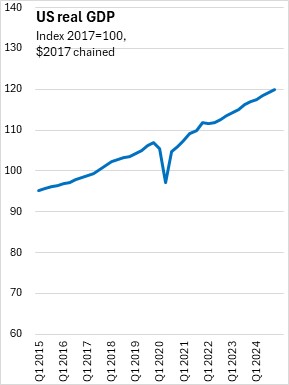
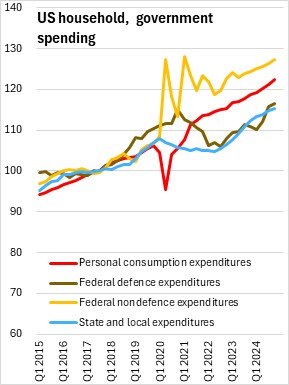
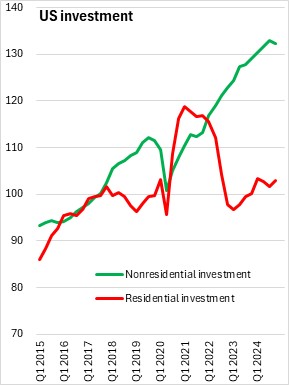
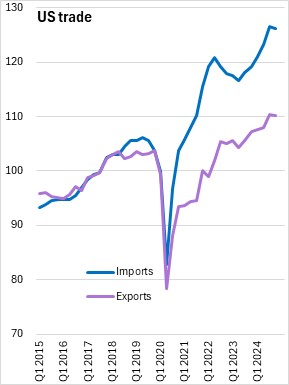
Current-dollar GDP growth was 4.5% (annualized rate) following a 5.0% current-dollar GDP increase in Q3 2024.
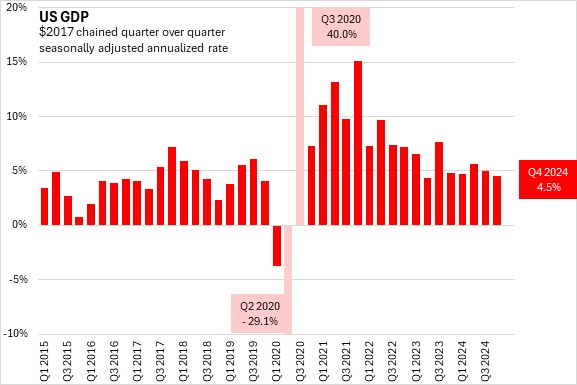
Private inventory investment was estimated at $4.4 billion net accumulation.
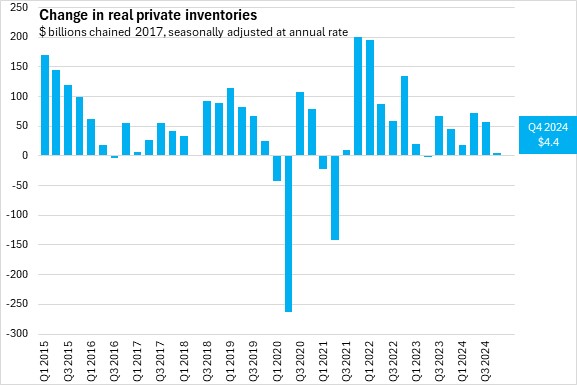
ANNUAL
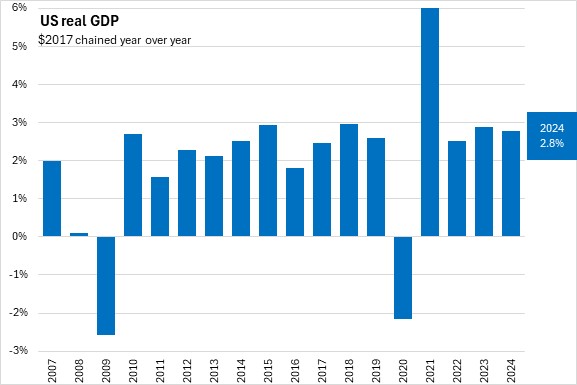
Real GDP in 2024 was up 2.8% compared to 2023, following 2.9% growth the previous year. Current dollar (nominal) GDP grew 5.3% in 2024, following growth of 6.6% in 2023.
The increase in real GDP in 2024 reflected increases in consumer spending (+2.8%), residential investment (+4.2%), non-residential investment (+3.7%), exports (+3.2%), state and local government spending (+3.9%), and federal government spending (+2.5%). These gains were partially offset by increased imports (+5.4%).
Source: US Bureau of Economic Analysis, retrieved from Federal Reserve Bank of St. Louis.
<--- Return to Archive